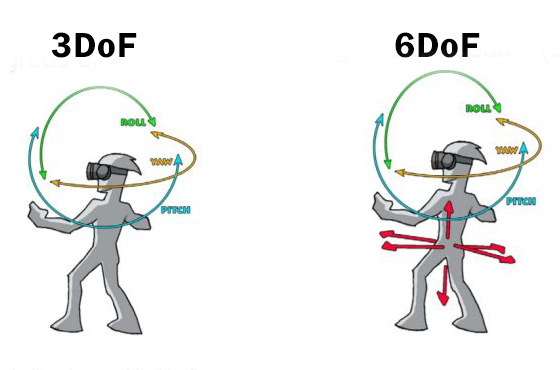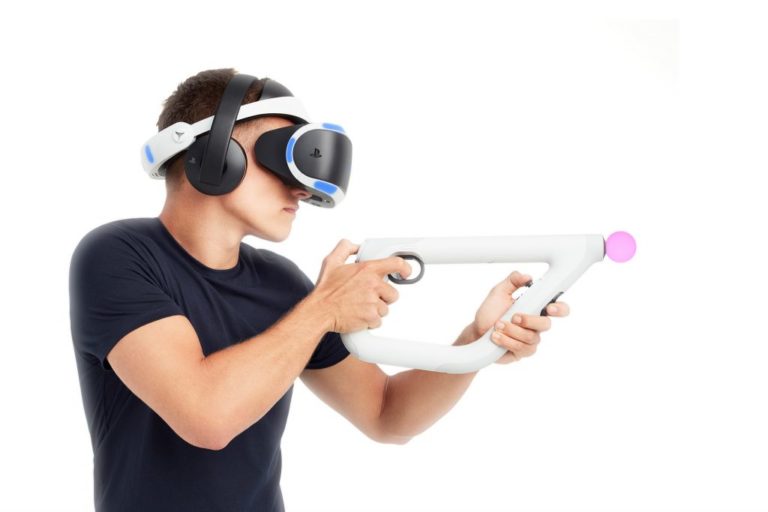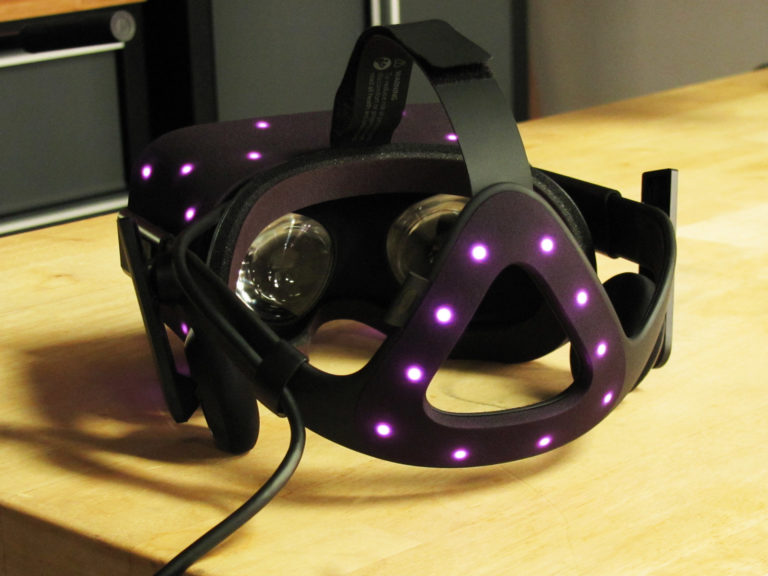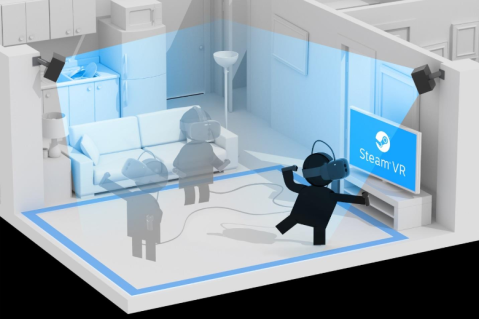What makes a VR headset different from a regular 3D display is its feature of tracking. Positional tracking has become a key feature in most of the VR headsets, including some standalone headsets, so you can duck, lean and walk around in virtual reality.
Before moving on to the ‘How’ of positional tracking, let’s see what it really means. Most standalone headsets such as Gear VR and Oculus Go only offer rotational tracking (3 Degrees of Freedom). 3DoF allows you to tilt your head, look right or left and up or down but the headset stops tracking when you move your head’s position or try to lean inside VR. 3DoF controllers act as laser selection pointers and only offer rotational tracking. This type of VR gear lets you have an immersive experience in virtual world while seating. However, it doesn’t let you interact with the virtual world with your hands or physically move around it.

Positional tracking, on the other hand, is now being integrated inside the PC and console VR headsets because it lets you move around the virtual world and interact with virtual objects with 6DoF controllers.
Tracking Systems
Typically 3DoF is done through microscopic electromechanical gyroscopes but there is no industry standard for positional tracking yet. Different technologies are being used by different companies to incorporate 6DoF.
Tracking systems offer a varying set of features, balancing between tracking volume, modularity, ease of setup, controller tracking range and cost. Here’s a review of different tracking systems with their pros and cons:
PlayStation VR
PSVR uses camera for tracking that operates in the visual light spectrum. There are 2 stereo cameras in the camera bar of PS4. Connected to PlayStation, the camera unit tracks the light orbs on the controllers and the blue strips of light on PSVR headset by using the image data.

Best thing about PSVR tracking is that it leverages existing controllers of PlayStation and needs low cost to integrate. On the other hand, there’s no room scale support and the tracking quality is somewhat low.
Oculus Rift – Constellation
Hidden under the external plastic of each tracked device is a constellation of infrared LEDs. Infrared light is not visible to the human eye but can be seen by sensors that can send frames to the PCs of users at 60Hz over a USB cable. Each frame is processed by PC as it identifies the position of every infrared LED, and subsequently each object’s relative position. Since the software knows the constellation’s shape, it can easily identify the LEDs it’s seeing as it remembers object’s location in the prior location, which direction acceleration is moving and its rotation. Moreover, every infrared LED identifies itself by blinking at a particular frequency. With these innovations, Constellation has become a better tracking system than the ones in past. A wireless chip in the sensor allows the Touch controllers and Rift headset to communicate wirelessly just before they pulse their LEDs. It allows camera shutter and LEDs to fire exactly at the same time, allowing the exposure to be short.

Constellation is not only less costly to integrate but it also provides high quality tracking and can work in most environments. However, each sensor needs to be connected to PC with a wire and has a limited vertical field of view.
SteamVR – Lighthouse
At the moment, the most unique tracking system is Lighthouse by Valve’s SteamVR. As opposed to other tracking systems, Lighthouse doesn’t need the PC to process any data or use camera at all. The core reason behind its design was to enable room scale positional tracking without needing to attach sensors to your PC with wires. Lighthouses are neither sensors nor they communicate with PC. Placed on opposite top corners of room, Lighthouses emit 2D infrared laser beams across it. Every tracked device can find its position in the room by measuring time between being hit by laser sweep for all axis and infrared flash. This type of tracking system offers unique value with its comparatively simple design as it doesn’t need any complex camera readings or computer vision algorithms.

Key benefit of using Lighthouse tracking system is that it requires no PC connection to base stations and offers wide tracking volume with high quality tracking. On the other hand, it is fairly costly to integrate and can cause glitches if the room has reflective surfaces.
SLAM – Inside Out
Many potential buyers are put off by the need to mount base stations or sensors in the room. This has led to the “inside-out” tracking system that uses computer vision algorithms through cameras built into the headsets. This particular algorithm is known as Simultaneous Location And Mapping (SLAM). SLAM determines the headset position by comparing the acceleration and rotation to how they move. In order to track controllers, SLAM operates similarly to Constellation – with IR light or visible light.
There are certain limitations to this system as well as it doesn’t work in the dark, cannot accurately track the movement of controller behind back or head or when the arm is between the controller and headset. However, SLAM requires trivial setup with no need for external hardware, and the cost for this technology is very low.
The fate of VR for masses is still riding on how convenient and affordable the gear will be. With every new innovation, we are stepping closer and closer to achieving a more immersive and engaging experience. It’s just a matter of time before VR becomes a regular companion in every household.
